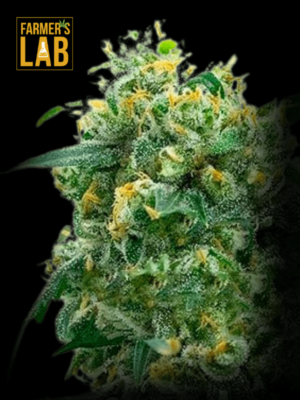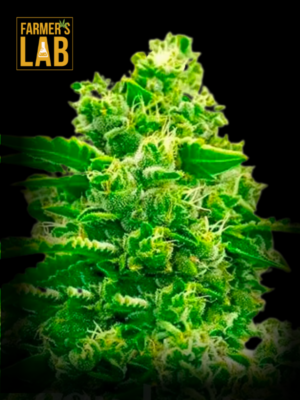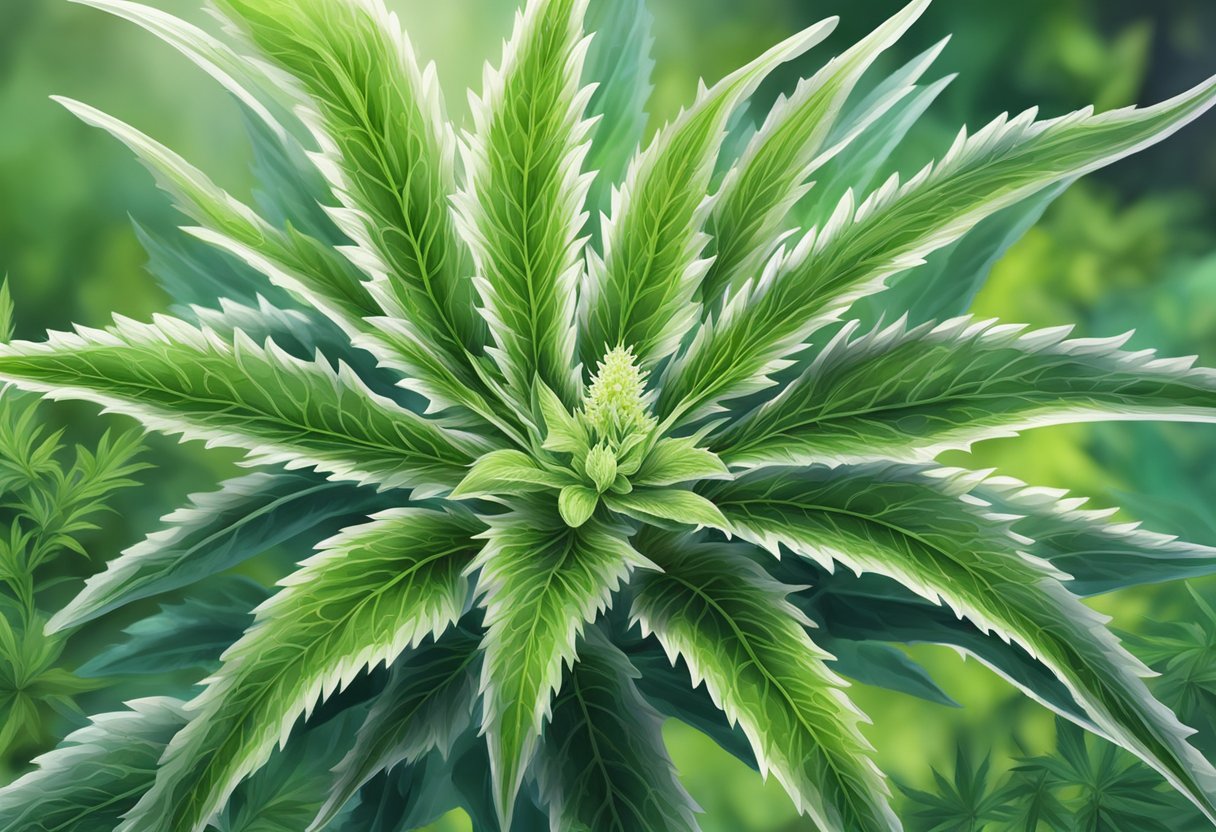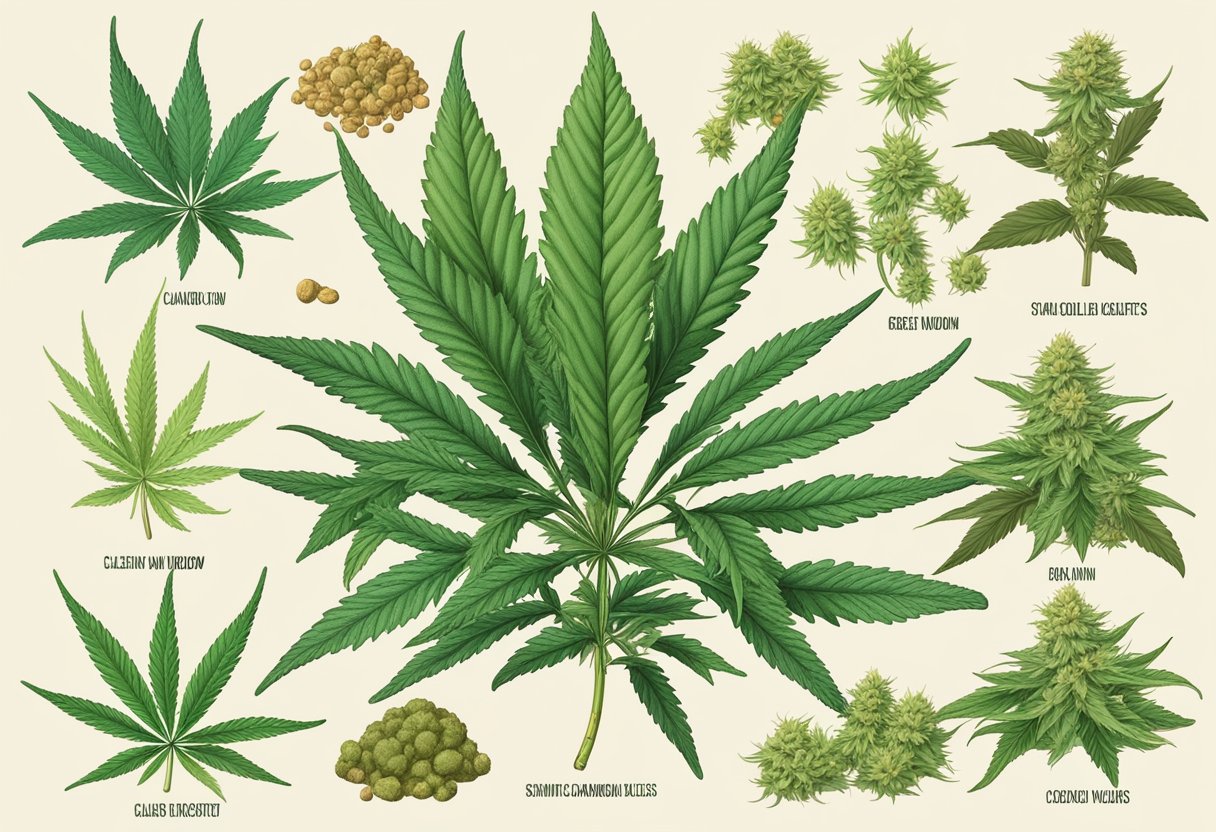


















White Widow is a popular hybrid strain of cannabis that has gained a renowned reputation amongst both recreational and medicinal users. It is a balanced blend of indica and sativa genetics, originating in the Netherlands. The strain’s historical significance has been chronicled, including its rise to prominence in the US cannabis culture. When you indulge in White Widow, you can expect a potent, versatile experience due to its impressive production of THC.
This celebrated strain has deep roots that stem from the tropical regions of South America and South India. It is a result of crossing a Brazilian landrace sativa and a resilient South Indian indica. The fusion of these divergent genetics has given rise to a resilient plant structure and an intriguing blend of aromas that includes a mix of earthy, pungent, and sweet notes, making it a favorite among cannabis connoisseurs.
Growers interested in the unique requirements of cultivating this strain in different climates can find detailed guidance on the best practices for growing White Widow in various US states and outdoors in Canada.
One of the signature traits of White Widow is its distinct coating of sparkling white trichomes, which serve as a visual indicator of its potency. When properly cultivated, this frosty-covered bud can yield THC concentrations reaching a whopping 20-25%.
As a hybrid cultivar, White Widow offers the best of both worlds catering to different preferences and needs. While the sativa genetics contribute to uplifting, euphoric effects that can enhance creativity and social interactions, the indica elements provide a soothing, relaxing feeling that can help with pain management and stress relief. This dual nature also plays into its enduring popularity in the American cannabis community.
The White Widow strain first made its appearance in the early 1990s. It is believed to have originated in the Netherlands, quickly gaining popularity in coffee shops and among connoisseurs for its potent effects and distinctive white trichomes.
In summary, White Widow provides you with:
By choosing a reputable source such as Farmers Lab Seeds, you can ensure that you receive high-quality seeds to grow your own White Widow and experience the best this legendary strain has to offer.
Growing White Widow, a legendary strain cherished for its robust effects and captivating fragrance, doesn’t have to be complicated. This comprehensive guide simplifies the process, equipping both novice and seasoned cultivators with the knowledge to produce a flourishing crop. Let’s delve into the key steps and tips to bring your White Widow seeds to their fullest potential.
Unlock the full potential of your White Widow strain with this detailed indoor cultivation guide. Tailored to enhance growth, improve yield, and ensure the health of your plants, these tips cover everything from flowering time to advanced hydroponic cultivation techniques. Get ready to elevate your indoor growing game with this expert advice.
Good-quality soil is crucial for growing White Widow. Aim for a pH level between 6.0 and 7.0 for the best results. Additionally, adapt your nutrient schedules according to the plant’s needs. Some common nutrient preferences for White Widow are:
Using a hydroponic system can be beneficial when growing White Widow, as it allows you to control the nutrient levels more accurately and provides an ideal environment for root development. Just ensure that you maintain the proper EC levels in your hydroponic system for optimal growth.
Key Insights:


White Widow, a hybrid strain with 60% sativa and 40% indica, has gained popularity among both medicinal and recreational cannabis users. With its unique balance between relaxation and cerebral stimulation, it is widely used to alleviate stress and depression symptoms. Here are some therapeutic uses of White Widow:
It’s essential to be mindful of potential side effects, such as paranoia or increased anxiety, especially for inexperienced users or those with pre-existing conditions.
In addition to its therapeutic benefits, White Widow offers a unique and enjoyable recreational experience characterized by a sense of euphoria and happiness. Here’s what you can expect from White Widow’s recreational effects:
As you explore White Widow’s medical and recreational effects, be sure to source your seeds from reputable suppliers like Farmers Lab Seeds. This way, you can ensure the highest quality and enjoy the full range of benefits this remarkable strain has to offer.


The White Widow strain is renowned for its delightful aroma and flavor profile. You’ll be drawn in by the captivating fusion of sweet and earthy notes that emanate from this strain. This comes from the perfect blend of aromatic profiles found in its two landrace parent strains.
Upon taking a hit of White Widow, your taste buds will be treated to the intricate and alluring combination of spice and sweetness, creating an unforgettable sensory experience. Enjoy the bold and balanced flavor sensation as this unique strain leaves a lasting impression on both your tongue and nose.
Often referred to as one of the most stunning cannabis strains, you’ll appreciate the visual appearance of White Widow. The buds exhibit an exquisite combination of colors, including vibrant green hues, with hints of brown and orange from the pistils.
What makes this strain truly remarkable are the trichomes. White Widow is famous for its impressive resin production, giving the buds a frosty, crystal-covered appearance. These trichomes are responsible for producing an abundance of cannabinoids and terpenes, which contribute to the strain’s flavor, aroma, and effects.
To break it down, here’s a table summarizing the White Widow’s sensory profile:
| Feature | Description |
|---|---|
| Aroma | Sweet, earthy, with a hint of spice |
| Flavor | Bold, spicy, and sweet |
| Smoke | Smooth, tingles the senses |
| Trichome | Abundant, crystal-covered, frosty |
| Appearance | Vibrant green, brown, and orange hues |
| Resin Production | High, contributes to potency |
As you explore the sensory journey of the White Widow strain, you’ll appreciate why it has become such an iconic and beloved choice among cannabis enthusiasts. The combination of deep, enticing flavors, an enchanting aroma, and visually impressive buds create an experience worth cherishing.


White Widow strain shares similarities with various cannabis strains. Some of the strains closely related or often compared to White Widow include the following:
These strains differ in their THC and CBD levels, growth patterns, and effects on users, but they all share the common denominator of producing impressive resin levels, enhancing their flavor, potency, and medicinal effects.
The White Widow strain is a product of two distinct landrace strains: the South Indian Indica and the Brazilian Sativa. With a genetic makeup of 60% Indica and 40% Sativa, it manages to balance the effects and cater to a wide range of users’ preferences. The South Indian Indica contributes to the high resin production and the characteristic relaxing body effects. In contrast, the Brazilian Sativa adds the uplifting and energizing aspects of the strain.
The resulting hybrid has become a well-balanced cannabis strain, popular for its unique and versatile high that encompasses both energizing and relaxing effects. Ideal for social situations, creative pursuits, or to alleviate stress and pain, White Widow delivers a reliable and enjoyable cannabis experience for both recreational and medicinal users alike.


White Widow, a legendary cannabis strain, has its roots in the Netherlands, where it gained prominence in the 1990s. This strain was developed by Green House Seeds and quickly became a sensation, eventually winning the prestigious High Times Cannabis Cup in 1995. As a hybrid, it combines the best features of its parent strains, resulting in a well-balanced and potent effect on both mind and body.
In terms of climate preference, White Widow flourishes in a Mediterranean environment, but its hardiness and adaptability make it suitable for various growing conditions. This strain’s resilience has played a role in its widespread popularity among growers and users alike.
Much like Amsterdam, the city where it was first bred, White Widow has become synonymous with open-mindedness, creativity, and a vibrant cultural scene. As a favorite among musicians and artists due to its ability to enhance creativity and focus, this strain has left its mark on various creative fields throughout history.
The following are notable factors that emphasize the cultural impact of White Widow:
Moving beyond its Dutch origins, White Widow has also found a place in Canadian cannabis culture. After the legalization of cannabis in 2018, this strain contributed to the expansion of Canadian heritage and society’s embrace of diverse influences.
White Widow is a strain with an interesting historical and cultural background, having a significant impact on the cannabis community and beyond. Its adaptation to the ever-changing times is evidence of the continuing legacy of this iconic cannabis strain.
Dive deeper into the fascinating world of White Widow with our extensive collection of resources. Designed for enthusiasts, cultivators, and anyone intrigued by this legendary strain, our guides and articles cover everything from cultivation tips to its cultural significance, medical benefits, and recreational use in both the US and Canada.
For Enthusiasts in the United States:
For Enthusiasts in Canada:
Absolutely. White Widow seeds are highly adaptable, thriving in both indoor and outdoor settings.
Expect White Widow to flower in about 8-9 weeks when grown indoors.
Maintaining moderate humidity is crucial to prevent mold and promote healthy growth.
Yes, its ease of cultivation makes White Widow an excellent choice for beginners.
While yields vary based on cultivation practices, White Widow is known for its generous outputs under optimal conditions.
The main consideration is humidity control to avoid mold, but it’s generally a resilient strain.
White Widow stands out for its adaptability, resilience, and the high quality of its yield, making it a superior choice for any gardener.
White Widow is a slightly sativa-dominant hybrid, famous for its potent effects, snowy trichome coverage, and a perfect blend of cerebral and physical relaxation.
Expect an initial burst of energy and heightened alertness, transitioning to a relaxed state, balancing both sativa and indica effects.
With THC levels up to 25%, White Widow ranks high in potency, offering a unique effects profile cherished by cannabis enthusiasts.
For top-quality White Widow seeds, consider Farmers Lab Seeds. Explore our selection to start your cultivation journey with confidence, supported by our expert guidance and premium seeds.
Originating in the Netherlands during the 1990s, White Widow quickly gained fame for its balanced effects and unique appearance. It has maintained its status as a beloved strain in the cannabis community, thanks in part to reputable sources like Farmers Lab Seeds.


WE ARE EVERY GROWERS ONE STOP SHOP TO ACQUIRE PREMIUM CANNABIS SEEDS FOR SALE IN THE USA, CANADA AND AUSTRALIA
Farmers Lab Seeds 2024,
All Right Reserved
Seeds are sold as novelty items, souvenirs, and collectibles. They contain 0% THC. We encourage our customers to check the legislation in their Country, State, Province, and Municipality prior to purchasing items from our store. We do not provide growing information.
All seeds are sold as hemp, and lab tested under 0.3% THC. This product is not for use by or sale to persons under the age of 21. This product should be used only as directed on the label. It should not be used if you are pregnant or nursing. Consult with a physician before use if you have a serious medical condition or use prescription medications. A Doctor’s advice should be sought before using this and any supplemental dietary product. All trademarks and copyrights are property of their respective owners and are not affiliated with nor do they endorse this product.
These statements have not been evaluated by the FDA. This product is not intended to diagnose, treat, cure or prevent any disease. Individual weight loss results will vary. By using this site, you agree to follow the Privacy Policy and all Terms & Conditions printed on this site. Void Where Prohibited by Law.